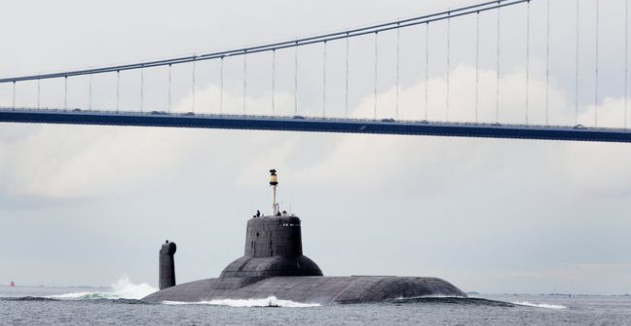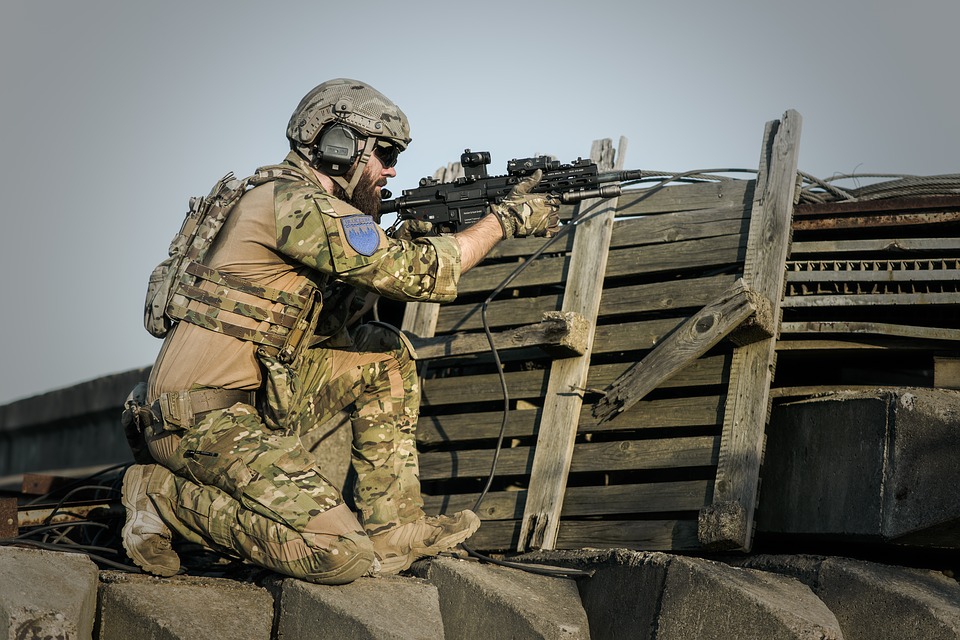The geopolitical situation has changed greatly since James Mattis requested his resignation from the Trump administration. He has long been considered a guarantor of NATO. But if you read Defense Secretary James Mattis' resignation letter, it is clear that he has different views than the president regarding alliances.
While the US remains the indispensable nation in the free world, we cannot protect our interests or serve that role effectively without maintaining strong alliances and showing respect to those allies...
My views on treating allies with respect and also being clear-eyed about both malignant actors and strategic competitors are strongly held and informed by over four decades of immersion in these issues.
According to a article in Military.com US four-star General Robert Neller told 300 military personnel stationed in Trondheim, Norway to be prepared for war and a “bigass fight” which was to come. "I hope I'm wrong, but there is a war coming... You are in a battle here, an informational battle, a political battle with your presence.”
The American general also said: “They're watching. Just like you watch them, they watch you. We've got 300 Marines up here; we could go from 300 to 3,000 overnight. We could raise the bar.” According to an anonymous survey by MilitaryTimes in October 2018, 46% of the troops who responded stated that the United States will be drawn into a major war within a year.
But what kind of war is the American general warning about and what is the background to his statements about strengthening the troops in Norway, unless it is just a pep talk for the troops stationed in Norway?
NATO's largest exercise in autumn 2018
NATO held its largest post-Cold War exercise between 25 October and 7 November 2018. The exercise Trident Juncture had 45,000 soldiers from 30 countries, 70 ships, 120 aircraft, and 10,000 vehicles in which they simulated Norway being attacked. The aircraft carrier Truman was also involved in the exercise. The US Marine Corps trained on the small border that Norway shares with Russia and the units practiced Article 5 of NATO on mutual defence.
Source: SvD
"I remain concerned about the potential for miscalculation."
Admiral James G. Foggo, US Naval Forces Europe-Africa and NATO Fleet Commander
Source Military Times
The US has gone so far as to threaten to attack Russian missiles if Russia violates the nuclear treaty. NATO Ambassador Kay Bailey Hutchison said in a press briefing in early October 2018 that they are looking at taking out a missile that could reach one of "our countries" in Europe and that could hit America in Alaska. It was the same Hutchinson who warned Sweden a few years ago to sign the UN ban on nuclear weapons.
The countermeasures would be to take out the missiles that are in development by Russia in violation of the treaty. So that would be the countermeasure eventually. - NATO Ambassador Hutchison
“I cannot forecast where it will go, it is a decision for the president, but I can tell you that both on Capitol Hill and in the State Department, there is a lot of concern about this situation and I'll return with the advice of our allies and engage in that discussion to determine the way ahead."
- NATO Ambassador Hutchison source Reuters
Putin's response came a few weeks later:
After nuclear holocaust, we'll go to heaven as martyrs; attackers will die as sinners
- Putin October 18, 2018, Valdai Club in Sochi.
Russia's rearmament with a new generation of weapons systems
Sweden has found itself in a heightened security situation as NATO has now expanded its eastern border to include the Baltics and the old eastern nations, at the same time interest in the Arctic has increased, where our neighbors Denmark and Norway have large territorial interests through Svalbard and Greenland.
Interest in the Arctic is about trade routes but also infrastructure and natural resources such as gas, minerals and oil. In the 2014 military doctrine, the Russians wrote for the first time that they will "defend Russian interests in the Arctic." So far, 40 heavy icebreakers, 16 deep water ports, dedicated training centers, stationing of paratroopers, counter-terrorism, electronic warfare destroyers and other forces are being built in the region. China has also launched a document about its Arctic strategy called "Polar Silk Road". The Chinese are interested in natural gas in northern Russia in an area called Yamal. source Military Times "A New Cold War”.
According to a article in Russian Times NATO has beefed up its military presence on Russia's western border over the past five years, forcing Moscow to retaliate, according to Russian Defense Minister Sergey Shoigu. Since 2012, the strength of NATO's militarily deployed contingents on Russia's western borders has grown threefold. When the NATO border is moved east, it means that Sweden and Finland, which are outside NATO, could end up in a very difficult situation. Four battalion-level tactical groups, a US armored brigade deployed in the Baltics and Poland, and personnel at international NATO divisions in Poland and Romania.
Satellite images indicates a military build-up Kaliningrad the Russian territory sandwiched between Poland and the Baltics but cut off from the rest of Russia. Chernyakhovsk is a military base that has nuclear weapons with Iskander missiles.
Russian President Vladimir Putin has emphasized weapons development. In March, Putin boasted that the new weapons will render NATO's defenses "completely useless" while delivering a warning to the world about Russia's new military capabilities. In October 2018, the Kremlin-loyal RussianTimes wrote about hypersonic weapons. A hypersonic glider is a type of projectile that can fly and maneuver in the upper atmosphere at speeds above Mach 5. This makes them more difficult to intercept than conventional warheads, Russia's variant of the system is called Avangard and will be ready for military service in a few months , according to Putin.
After the summit with US President Donald Trump, Russia's Ministry of Defense released a series of videos on YouTube to show the new weapons. Infront of the naval parade off St Petersburg they sent 40 warships including the first new stealth frigate Admiral Gorshov which will form the basis of their new fleet for 2025.

Nuclear weapons – “escalating to de-escalat
The nuclear-powered attack submarine Orel carrying 24 cruise robots of the "Granit" type and 4 nuclear warheads (according to FOI) has been practicing in the Baltic Sea according to SVT. The U-boat, which is a sister ship to the Kursk, is equipped with the cruise robots that have a range of 60 miles. It is the first time a Russian nuclear-powered submarine with cruise robots that can be equipped with nuclear weapons has exercised in the Baltic Sea.
Russia has increased its holding of nuclear warheads by 30% in 3 years and the number of combat-ready units. In Kaliningrad, they have set up stationary Iskander robots with the ability to reach large parts of Sweden. Their war exercise Zapad which was in September 2017 was, according to an article in the German Bild (which is not the heaviest newspaper), about a attack on NATO and full-scale war against countries such as Sweden, Norway, Finland, Poland, Germany and Holland. The exercise included TU-95 bombers and the targets targeted critical infrastructure such as airfields and ports. The Zapad exercise also used new electronic warfare and drone technology. But what would Russia actually gain from a conventional war?
Poland's former foreign minister (and former defense minister) Rodick Simorski has written an article "Anticipating Putin's next war” in the Washington Post on the Russian threat of hybrid war ending with a nuclear bomb as a game-theoretic scenario that involves non-escalation of the conflict.
Nuclear weapons outside of a possible conflict?
NATO's northern flank is not protected by nuclear weapons and in the event of a war in northern Europe, the nuclear weapon states excluding Russia can be excluded from a conflict. The Swedish government with Wallström did not vote under the UN Convention against the Prohibition of Nuclear Weapons in September 2017 because it would have meant that NATO with James Mattis would not renew its partnership with the alliance.
According to German Der Spiegel US Defense Secretary Mattis issued an ultimatum at NATO headquarters in Brussels in November 2017 demanding a response to Russian nuclear-based SSC-8 medium-range missiles. Mattis is said to have said that NATO must find a common position to get the Russians to return to the INF treaty or they "push a head of its own". On 15 December 2017, NATO issued a joint press release.
Regarding the issue of the INF treaty, Putin believes that the Americans were the first to leave the ABM treaty in a video that was published December 14th. He also points out the missile defense in Romania, where NATO can replace the robots with long-range weapons. Putin has a whole program around development in the arctic where they look at mineral resources, the environment, security issues and various national projects.
The Trump doctrine – America first
It is not only NATO's expansion that is a problem, but also the motives of the Americans. Economically, Northern Europe is a strong competitor to American industry and liberal societies are far from Trump's imperialist worldview with "peace through strength". For a long time there has been irritation that Europe does not bear its own defense costs, i.e. bought weapons and protection from the US equivalent to 2% of GDP.
According to Bloomberg Putin and Trump have spoken several times in recent weeks on the phone and they are pressuring the Russian oligarchs with economic sanctions that are not based on any official information.
Trump's new and aggressive security policy has singled out China and Russia as competitors to the United States. Trump is said to have given Defense Secretary Mattis a presidential order "to investigate how they can conduct operations against nameless"near-peer” competitors i.e. a group of countries that US officials typically identify as China and Russia. Source
Article 5 of NATO's statutes regarding mutual defense in NATO has been questioned by Trump on several occasions, for example whether they should defend "Montenegro, which is a small country with very strong people". He has expressed similar thoughts with Löfven that the US should consider case by case if they are to intervene.
Getting countries to buy more weapons
NATO efforts are paid per GDP level. The US pays about 22%, and US GDP is about 22% of NATO's GDP. The other nations also pay their percentage share. The total NATO operating budget is about 1/1000 of the total combined defense budgets of the NATO powers. There are suggestions that each nation should target 2% GDP spending on defense. If you look at NATO's combined defense budgets, the US has about 70% to pay for the US nation's defense, not NATO's. The proposal is about trying to get other NATO nations to increase their defense spending. Guess who the NATO nations mainly buy weapons from?
Above all, the Americans want to sell weapons and have confirmed in December that they will sell anti-tank missiles to Ukraine and, in addition to Sweden, they have also pressured Japan, Spain and Saudi Arabia to make expensive arms purchases for arms giants such as Boeing, Raytheo and Lockheed Martin. The policy that they work according to is Conventional Arms Transfer (CAT) which is also called "Buy America” the plan. which is about strengthening the US arms industry. To Sweden, they want to sell the Patriot air defense system for an estimated SEK 10 billion, which will provide limited protection against the Iskander robots. At the same time, the Russians have succeeded in selling long distance S-400 air defense to both Turkey and Saudi Arabia.
Norway's Prime Minister Erna Sohlberg and Minister of Foreign Affairs met Trump in the White House on January 10, 2018 and then they are said to have talked about weapons, although the official line was that they talked about the climate agreement according to VG.
Perhaps it is not so strange that our ÖB comes out and says that it is risky not to buy air defenses from the USA.
Impeachment – not by a long shot
Mueller's investigation into Trump that could lead to impeachment and North Korea are examples of events that could trigger a war but as Trump loses more seats in the US Congress where he is still protected by the Republican majority.
Trump has almost a war cabinet and is equipped with several senior generals in his vicinity, such as Defense Secretary James Mattis who has a reputation for being offensive, security adviser HR McMaster and John Kelly who is the head of homeland security. The administration in the White House is headed by John F. Kelly another retired 4 star general.
How will European states act?
The balance of power has shifted in our vicinity and the European leaders have begun to realize the seriousness of the situation and create more dialogue with Russia instead of confrontation. According to Russian Times the OSCE with German Foreign Minister Steinmeier and 15 other European countries, including Sweden, approached Russia for a new agreement regarding the rearmament that took place in Europe.
According to a article in the evening newspaper was Stefan Löfven with Emmanuel Macron, a politically weakened Angela Merkel and the other heads of government on the eighth floor of the Europe building in Brussels' EU quarter just before Christmas 2018. If you read the EU documents, their long-term line seems to be about deepening various types of defense cooperation through Pesco (Permanent Structured Operation).
More information
Read more "Baltic Sea Security Report"





1 thought on “Amerikansk general tror på krig i norra Europa”